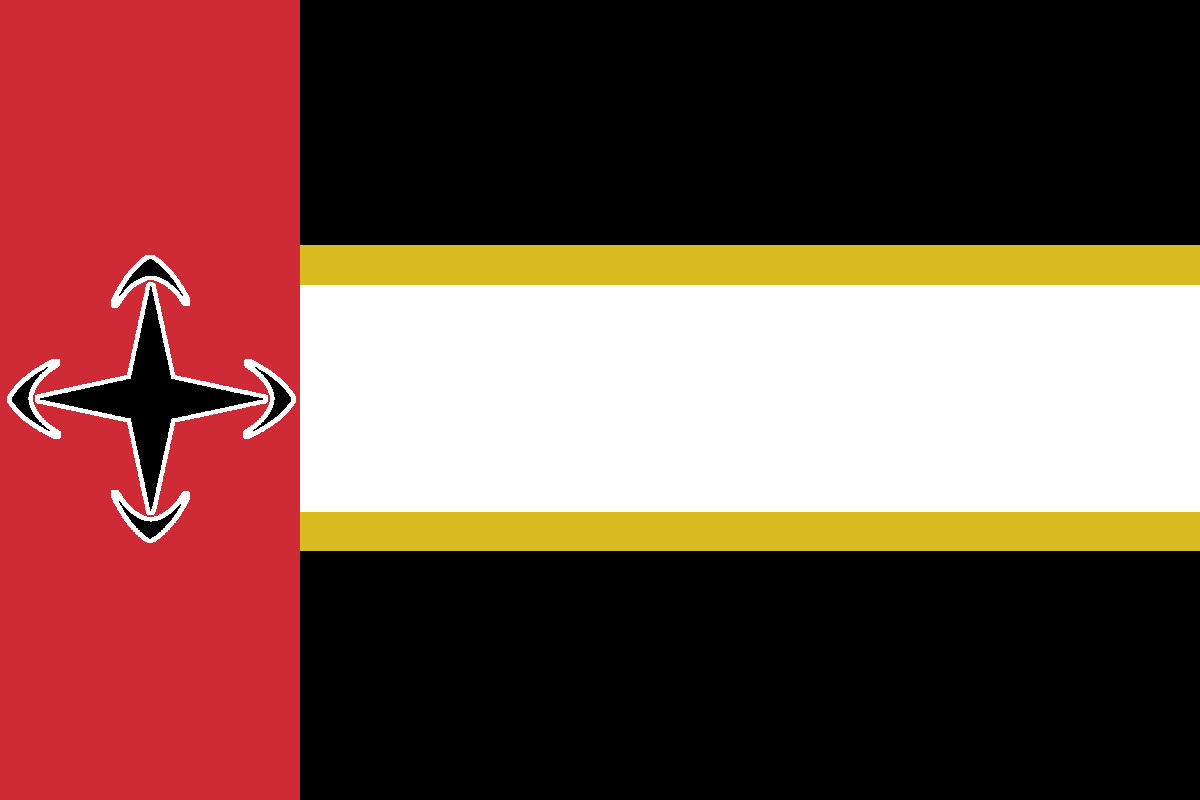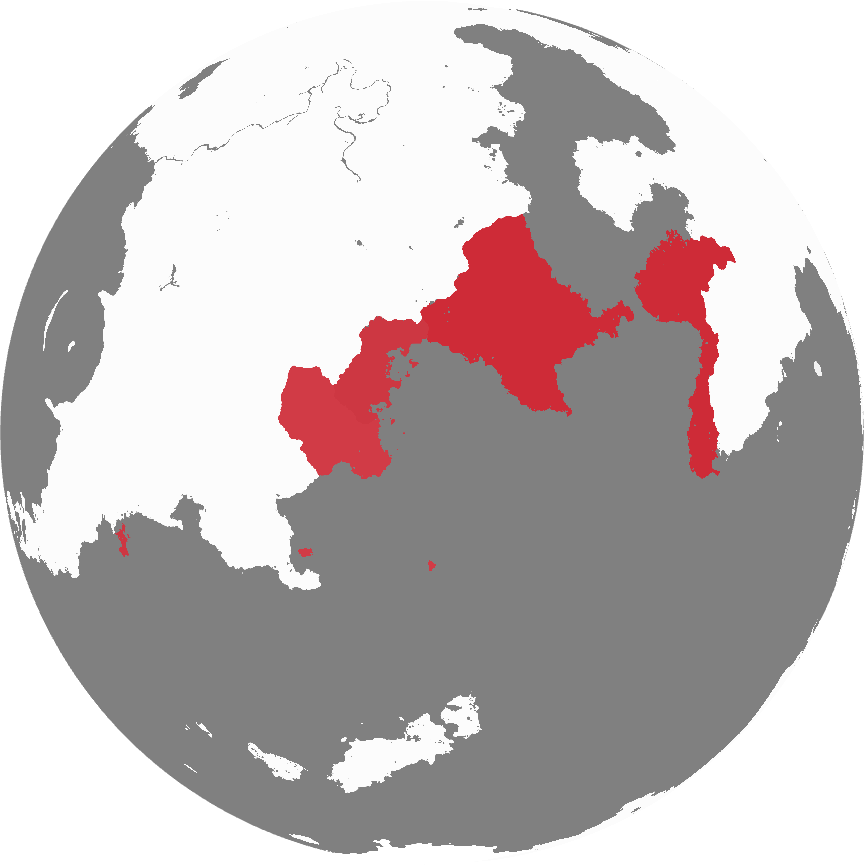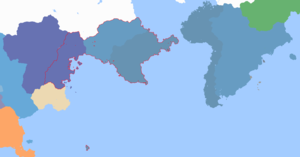Phoenia: Difference between revisions
Phoenia652 (talk | contribs) No edit summary |
Phoenia652 (talk | contribs) |
||
| Line 63: | Line 63: | ||
The main legislative body of Phoenia is composed of three houses; the Iroan Senate, the Aontan Senate and the Grand Senate. The former two are the head lawmaking bodies of the members of the Union, and are tasked with making regional laws for their respective halves. If a law passes in the lower senates, it proceeds to the Grand Senate, the supreme legislative body of the Union. A simple majority is all that is needed for a law to pass the Grand Senate, and if a law is vetoed it returns the lower senate from which it came. Once there, the veto can be nullified by a 2/3rds majority, in which case it becomes law. |
The main legislative body of Phoenia is composed of three houses; the Iroan Senate, the Aontan Senate and the Grand Senate. The former two are the head lawmaking bodies of the members of the Union, and are tasked with making regional laws for their respective halves. If a law passes in the lower senates, it proceeds to the Grand Senate, the supreme legislative body of the Union. A simple majority is all that is needed for a law to pass the Grand Senate, and if a law is vetoed it returns the lower senate from which it came. Once there, the veto can be nullified by a 2/3rds majority, in which case it becomes law. |
||
In the Grand Senate, there is an equal number of senators (20 seats) from each of the union members, ensuring that no one member state can dominate the supreme body. The number of senators in the lower senates is based on provinces, and is determined proportionally by the population in those provinces. |
In the Grand Senate, there is an equal number of senators (20 seats) from each of the union members, ensuring that no one member state can dominate the supreme body. The number of senators in the lower senates is based on provinces, and is determined proportionally by the population in those provinces. |
||
| + | |||
| + | The Leader of the Phoenian executive is the Grand Chancellor, elected every 10 years to which there is no term limit. (However, an informal limit of 2 terms was established by Klari). This person oversees the bureaucracy and can appoint people to positions within it. To be elected, the grand chancellor must achieve a majority in both Iroa and Aontas, to ensure that one entity does not dominate the politics of the union. |
||
[[Category:KP2.5 Nations]] |
[[Category:KP2.5 Nations]] |
||
Revision as of 22:29, 2 December 2021
|
Second Federal Union of Phoenia
An Dara Cónaidhm na Fhoen
/ Alaitihad Alfidiraliu Alththani Lifiniqia
|
|||||
|---|---|---|---|---|---|
 |
|||||
| The Flag of Phoenia | |||||
| Motto | Unity in the face of Adversity | ||||
| Common Name | Second Federal Union of Phoenia | ||||
 |
|||||
| Map of the Federal Union in 2144 | |||||
| Demonym | Phoenian | ||||
| Official languages | Tekkian, Parast, Graner | ||||
| Politics | |||||
| Capital | Phoezi | ||||
| Government | Federatal Parliamentary Republic | ||||
| Foundation | 2116 | ||||
| Preceded by | Aontas , Iroa | ||||
| Demography | |||||
| Ethnicities | Tekkian, Egercian, Celrapani, Cabrai, Chosaint, Grander, Wuste, Iroan, Bastian, Owlian | ||||
| Population | 17.26 million | ||||
| Area | 81,039km^2 km² | ||||
The Second Federal Union of Phoenia, also known as the Phoenian Federal Union or simply Phoenia is a nation located in eastern Kolus, consisting of 19 mainland provinces, the Protectorate of Wuste, and the directly administered overseas territory of Bulge. It is bordered by Arcovii-Zokesia to the West, Sceania and Solaria to the North and Newest Grestin to the East. Phoenia is currently a member state of the Federation of Greater Aontas
Etymology
The name of the Federal Union, "Phoenia" is largely credited to the first chancellor of the Union; Ahalt Klari, who suggested the name to represent the union's "birth from the fires of revolution." This, referring to the mythical phoenix (Na Fhionn - Aontan, Tayir Alfiniq - Iroan), a bird which regenerates and begins a new life after combusting into flames. Despite the name not being representative of local ancient mythological belief, the name stuck and became the official title of the nation.
The name also comes as a derivative of the name of its capital city, Phoezia. The city, home to around 430,000 residents was founded in 2116 to celebrate the union between what had remained of Aontas and the newly independent Iroan Republic.
History
Revolutionary Period and Formation (2115-2116)
The period that lead to the formation of the First Federal Union of Phoenia is complicated and dominated by revolution. The geopolitics in question concerned two nations: The Federation of Greater Aontas and the Kingdom of Carsodonia.
Aontas consisted of two halves on either side of the strait of Aonta and dominated most of the Kafraic subcontinent. Its eastern half being comprised mostly of Grestinian and Dioscan protectorates bordering the directly administrated East Tekkia and Cabrai. The Aontan government mostly centered around the strait, struggled to maintain its control over the four protectorates of Diosca, Grestine, the North Grestin Confederacy, and Unified States of Grestin. A resurgent desire for self determination by the Kostel population of these lands soon took hold of the region. In Lutzayu of 2115, the government of Diosca declared independence from Aontan rule. When Aontas threatened retaliation, Diosca elected to become part of the nearby Kroman Republic, thus preventing Aontas from taking action without avoiding a diplomatic incident with Krome. This also demonstrated to the other Grestinian states that independence from Aontas was possible and further encouraged their dissent. The three protectorates formed a united front, declaring themselves as the New Grestin States in Gardo of the same year. The "War of the Three Grestins" soon followed, and saw the Aontan forces quickly and resoundingly defeated, highlighting the ill-prepared and underfunded nature of the Aontan forces. New Grestin annexed all Aontan lands in Kafraic, leaving them with only their holdings in Kulge and without their capital and largest city of Cath.
Following this humiliating defeat, the previous chancellor resigned and was replaced by Ahalt Klari, who made a series of reforms to the military resulting in more disciplined troops and a revised chain of command, allowing for a quicker response time to threats. Aontan attention soon turned to their western neighbor, the Kingdom of Carsodonia, itself undergoing a revolution. The Iroan population which made up most of the former kingdom's southeast had declared independence earlier in 2115, seeking to create a democratic nation free of despotic rule. By 2116, they had managed to secure most of the coastal region, but were being slowly encroached on by Carsodonian government forces. Seeing an opportunity for a potential ally and to reclaim some lost glory, Aontas began providing assistance to the rebels, who called themselves the Iro Liberation Front and declared war against the Kingdom of Carsodonia in support of the ILF, defeating the kingdom in late 2116. The newly independent Iroan Republic, or simply Iroa united with Aontas to form Phoenia in the last days of 2116.
Geography
The Geography of Phoenia varies greatly over the many territories it encompasses. Due to the presence of the Aontan strait, Phoenian geography can be divided into two distinct eastern and western halves (Kafraic and Kulge respectively), with very different biomes.
Phoenia's vast coastline borders the Gulf of Iro, dotted with many islands and inlets to the south, the narrow Aontan strait on both sides, the entrance to the the inland Sea of Kolus which it borders to the North.
In terms of mountain ranges, Phoenia is home to two major ranges. In the center of the Kulge peninsula lies the Sleibh Range, home to an oasis of biodiversity within a sea of desert. The highest of which is Mt. Velm (6,520m above sea level). In Kafraic, the smaller Creagacha Dubha rises to a similar height of ~6000 meters. Both mountain ranges are designated as nature reserves by the Ministry of the Interior.
The environment of Phoenian Kulge is largely covered by desert in which few plants and animals can thrive, the exception is Ria, its thriving watershed shielded from the desert by mountain ranges, making it a key agricultural sector. In Kafraic, the environment differs drastically from that of the west, with woodlands and plains being the dominant biome.
The climate in Phoenia can be best characterized as Tropical, with only a wet and a dry season experienced in the majority of the nation.
Government and Politics
The Political Structure of Phoenia can be best characterized as a union of two political entities operating within a single centralized system. These entities in question are the Federation of Aontas and the Iroan Republic, which have had territories added to their jurisdiction as Phoenia has expanded.
The main legislative body of Phoenia is composed of three houses; the Iroan Senate, the Aontan Senate and the Grand Senate. The former two are the head lawmaking bodies of the members of the Union, and are tasked with making regional laws for their respective halves. If a law passes in the lower senates, it proceeds to the Grand Senate, the supreme legislative body of the Union. A simple majority is all that is needed for a law to pass the Grand Senate, and if a law is vetoed it returns the lower senate from which it came. Once there, the veto can be nullified by a 2/3rds majority, in which case it becomes law. In the Grand Senate, there is an equal number of senators (20 seats) from each of the union members, ensuring that no one member state can dominate the supreme body. The number of senators in the lower senates is based on provinces, and is determined proportionally by the population in those provinces.
The Leader of the Phoenian executive is the Grand Chancellor, elected every 10 years to which there is no term limit. (However, an informal limit of 2 terms was established by Klari). This person oversees the bureaucracy and can appoint people to positions within it. To be elected, the grand chancellor must achieve a majority in both Iroa and Aontas, to ensure that one entity does not dominate the politics of the union.
